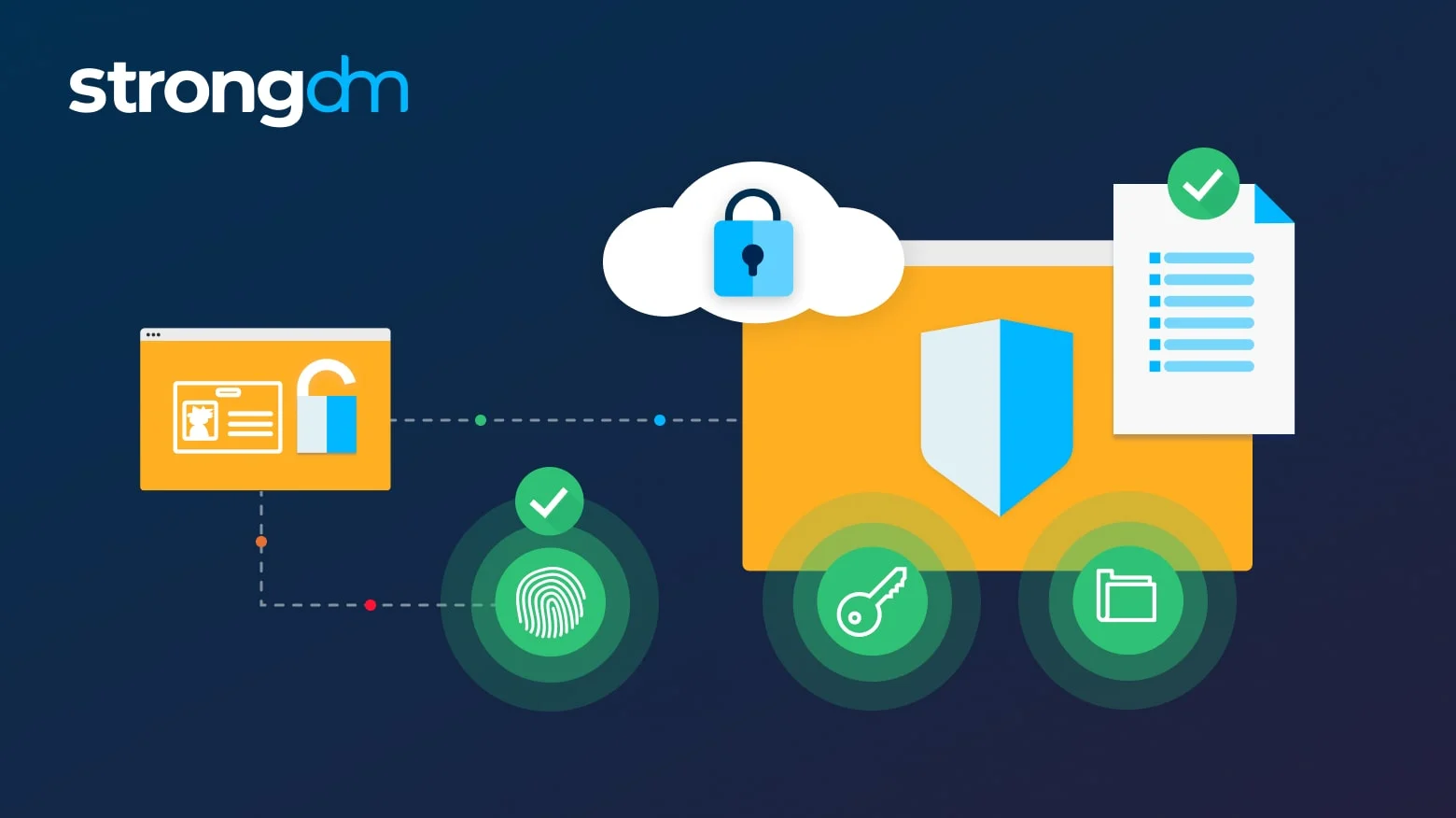
- Role-based, attribute-based, & just-in-time access to infrastructure
- Connect any person or service to any infrastructure, anywhere
- Logging like you've never seen

Organizations often face the challenge of granting and revoking access for vendors to specific systems, applications, or data within their network. The process involves onboarding and offboarding vendors, each step presenting unique challenges.
What Is Vendor Access Management (VAM)?
Vendor Access Management (VAM) is the systematic control and oversight of vendor access to an organization's systems, applications, and data. It involves processes such as onboarding and offboarding vendors, utilizing solutions for Just-in-Time access, ensuring security, and streamlining workflows to minimize operational inefficiencies.
Vendor Access Management (VAM) Challenges
Configuring and Managing Access Permissions
Configuring and managing access permissions manually is a complex task, particularly when dealing with multiple vendors. Each vendor may require different levels of access, leading to potential complications and delays in the process.
Onboarding
Onboarding vendors is a multi-step process that includes identity verification and granting access rights. Coordination between various teams is essential to ensure a smooth onboarding experience and to avoid delays in provisioning access.
Offboarding
Revoking access promptly across all systems during offboarding is crucial to prevent security vulnerabilities. However, this process can be time-consuming and prone to oversight, highlighting the importance of efficient offboarding procedures.
Fair.com simplified the onboarding and offboarding process with StrongDM. Learn more.
Traditional VPN Challenges
Operational Inefficiencies
Traditional VPNs, while commonly used for remote access, introduce operational inefficiencies. Accessing a customer's VPN infrastructure can be complex, leading to potential challenges in day-to-day operations.
Security Risks
Maintaining the principle of least privilege becomes cumbersome as VPNs often require granting broad access, potentially exposing critical components and leading to security risks.
StrongDM’s Vendor Access Management (VAM) Solution
Just-in-Time Access and Simplified Workflows
StrongDM revolutionizes vendor access management by offering Just-in-Time access. This approach streamlines workflows, allowing vendors to access only the specific components they require, adhering strictly to the principle of least privilege.
Security Measures
StrongDM adds an extra layer of security by concealing the internal network structure and resources. This measure prevents direct access, contributing to the protection of critical assets from potential attacks or unauthorized access attempts.
Federated Identity Capabilities
One key feature of StrongDM is its federated identity capabilities. Vendors don't need to be integrated into the customer's Identity Provider (IDP). Instead, they receive invitations to access the customer's environment directly, with Role-Based Access rules in place.
Access Approval and Revocation
Customers can approve access for a specified duration, and StrongDM ensures that access is automatically revoked upon completion. This streamlined process ensures the timely termination of access rights, reducing the risk of lingering access.
Installation and Deployment
Administrative Permissions Not Required
An additional advantage of StrongDM is its client installation, which does not require administrative permissions. This feature allows vendors to swiftly deploy the client across various systems without relying on IT or administrative support.
Benefits of StrongDM for Vendor Access Management (VAM)
Swift and Controlled Access
StrongDM empowers vendors with swift and controlled access, reducing onboarding time and enabling them to efficiently navigate the system without compromising security.
Efficient Remote Troubleshooting and Maintenance
The platform's intuitive interface and on-demand access provision significantly reduce onboarding time. This enables vendors to focus on their tasks promptly and conduct remote troubleshooting, maintenance, or support efficiently without the need for physical presence.
Agile Deployment of Changes
Vendors can deploy updates, patches, or new configurations remotely. This ensures that the organization's equipment remains up-to-date and operates optimally. The agility in deploying changes enhances the performance and functionality of systems, minimizing downtime.
Conclusion
In conclusion, effective Vendor Access Management (VAM) is critical for organizations to navigate the complexities of granting and revoking access for vendors. Traditional approaches, such as manual configuration and VPN usage, present challenges in security and operational efficiency. StrongDM emerges as a revolutionary solution, offering Just-in-Time access, granular control, and enhanced security measures, streamlining workflows, and empowering vendors with swift, controlled access. Its federated identity capabilities (multiple methods of authentication not tied to a single identity provider) and hassle-free deployment further contribute to efficient access management. To experience the benefits of StrongDM firsthand, we invite you to book a personalized demo and explore how it can optimize your organization's vendor access processes.
Vendor Access Management (VAM) Key Takeaways
- Vendor Access Management (VAM) involves complex processes of onboarding and offboarding vendors, addressing challenges in configuring and managing access permissions manually.
- Traditional VPNs pose operational inefficiencies and security risks, and StrongDM eliminates the need for a VPN with streamlined workflows and enhanced security measures.
- StrongDM offers Just-in-Time access, granular control, and additional security layers, empowering vendors with swift and controlled access while ensuring compliance with the principle of least privilege.
- The federated identity capabilities of StrongDM simplify access for vendors, eliminating the need for integration into the customer's Identity Provider.
- StrongDM's installation without requiring administrative permissions facilitates swift deployment across systems, contributing to efficient remote troubleshooting and maintenance.
About the Author
Shane Stephens, Solutions Architecture Expert, Shane is a seasoned cybersecurity professional with over 20 years of expertise. Shane has assisted numerous government and commercial customers on their Network Access Control journey, offering invaluable guidance and tailored solutions at ForeScout Technologies. He also led incident response and vulnerability management operations at the Defense Information Security Agency Command Center and contributed to data analytics at the National Security Agency. His engineering work at The Johns Hopkins Applied Physics Laboratory focused on developing secure platforms for the modern battlefield. Shane is dedicated to safeguarding the digital future.

You May Also Like




